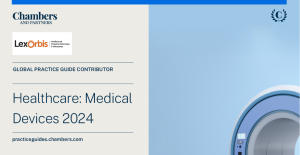India
Trends and Developments
Healthcare and Medical Devices in India: Ongoing Projections
The Indian healthcare industry has undergone a substantial transformation in the past decade and is currently poised for rapid growth. The healthcare system in India is a multifaceted and intricate network that encompasses both the governmental and commercial sectors. It provides 1.4 billion residents with a wide variety of medical remedies and infrastructure. However, the distribution of healthcare services is incredibly uneven, leading numerous regions of the country to struggle with achieving universal access to high-quality, reasonably priced healthcare.
The medical device sector has experienced substantial growth throughout the years and is now an essential component of the entire healthcare process at all levels. Although it is crucial to increase the accessibility and affordability of these services, there has been a substantial shift towards relying on imports to satisfy the increasing demand for healthcare services because of numerous environmental constraints.
Several healthcare innovations are presently in use in the Indian system, including affordable medical devices and innovative healthcare delivery strategies. The country’s healthcare regulatory system is evolving to guarantee patient welfare, encourage exceptional treatment, and manage expenses. Three fundamental industries serve as the foundation of contemporary healthcare systems – namely, vaccines, medications, and medical devices. Hypodermic needles and adhesive bandages are among the most fundamental medical instruments.
Furthermore, the use of modern medical equipment – such as genetically modified cells, bioinformatics, nanotechnology, machine learning, precision medicine, and AI – is on the rise. Medical experts, patients, and health-conscious customers can utilise these devices in a variety of contexts, including private homes, hospitals, and clinics. In recent years, the pharmaceutical and biotechnology industries in India have experienced substantial growth. Medical tourism, Ayushman Bharat (India’s national health protection scheme), and the National Health Mission are critical components of the positive evolution of India’s healthcare system.
The Indian government’s co-ordinated policy actions and the establishment of supportive institutions have significantly facilitated the expansion. The availability of reasonably priced pharmaceuticals and immunisations is increasing in India and other developed and developing countries. The Indian government has officially recognised India’s medical equipment market as a rapidly expanding and viable industry. Projections suggest that the medical device market could reach a valuation of USD50 billion by 2030. The general dynamics of supply and demand in India provide a compelling justification and opportunity for the production of medical apparatus. The Indian government’s “Make in India” initiative assists the medical device industry in re-evaluating its business model, identifying critical areas for development, and exploring potential avenues for innovative advancement.
India’s medical equipment markets and services have experienced substantial growth in the past decade. Implants are among the numerous medical devices and consumables that India manufactures. India primarily manufactures implants for medical purposes, including orthopaedic implants, intraocular lenses, drug-eluting stents, and cardiac stents. Additionally, India manufactures disposable medical instruments such as catheters, perfusion sets, extension lines, cannulas, feeding tubes, needles, and syringes. Healthcare system personnel must continuously educate themselves to stay up to date with the rapid technological advancements. The medical equipment industry is characterised by a high level of capital intensity.
Nevertheless, the current supply of medical equipment in India is insufficient to meet the demand. This stems from India’s reliance on imports to fulfil 70–80% of its medical equipment needs. The primary concern for both domestic and foreign medical equipment producers is India’s significant under-utilisation of medical devices, which represents a significant opportunity for development. The Indian government has implemented a variety of policies and initiatives to facilitate the growth of India’s medical device sector. In 2014, the Indian government initiated the aforementioned “Make in India” campaign, specifically identifying this sector as a priority. The Interim Budget 2024–25 allocates a total of INR98,461 crore, or USD11.85 billion, to all pharmaceutical and healthcare enterprises, including the Ministry of Ayush.
To Read More, Visit the Full Chapter First Published by: Chambers & Partners here
Authors: Manisha Singh and Pankaj Musyuni




